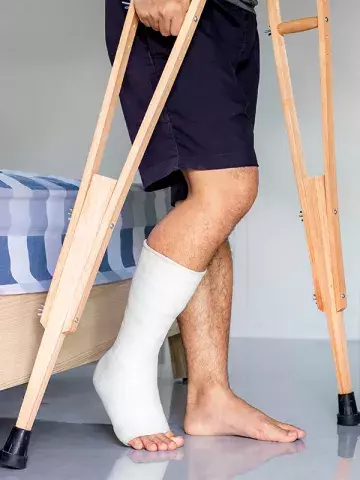How does testosterone therapy affect fracture risk in hypogonadal men?
By Melanie Hinze
Testosterone treatment does not result in a lower fracture incidence than placebo among middle-aged and older men with hypogonadism, findings of a new study suggest.
Published in The New England Journal of Medicine, the subtrial of the TRAVERSE study (a double-blind randomised, placebo-controlled trial that assessed the cardiovascular safety of testosterone treatment in middle-aged and older men with hypogonadism) examined the risk for clinical fracture in a time-to-event analysis.
Included men were aged 45 to 80 years (median 64 years), with pre-existing, or at high risk of, cardiovascular disease, one or more symptoms of hypogonadism and two morning testosterone concentrations of less than 300 ng/dL (10.4 nmol/L) in fasting plasma samples obtained at least 48 hours apart. In total, 5204 participants were randomly assigned to apply a testosterone or placebo gel daily, and followed for a median of 3.19 years.
The researchers found the three-year cumulative incidence of all clinical fractures to be 3.8% in the testosterone group and 2.8% in the placebo group. They also found that the fracture incidence was numerically higher in the testosterone group for all other fracture end points.
Writing in an accompanying editorial, Professor Mathis Grossmann, Professor of Medicine at the Department of Medicine, University of Melbourne, and Consultant Endocrinologist at Austin Health, Melbourne, and Professor Bradley Anawalt, from the University of Washington School of Medicine, Seattle, USA, said the increased incidence of clinical fractures in the testosterone group was a surprising finding.
They pointed out that the incidence increased immediately at the onset of treatment, ‘a finding that would be too rapid to be due to effects on bone,’ they wrote.
‘The rapid divergence between the trial groups is more likely to be related to behavioural changes,’ they wrote. For example, testosterone might have affected behaviours such as engaging in physical activities associated with greater fracture risks. They also noted there was no substantial between-group difference in the incidence of typical osteoporosis clinical fractures, whereas ankle and rib fractures, typically associated with trauma, accounted for most of the excess factors in the testosterone group.
In terms of clinical implications, Professors Grossmann and Anawalt stressed ‘the findings did not apply to men with hypogonadism due to identifiable disease of the hypothalamic-pituitary-testicular axis, who needed testosterone for normal function.’ However, they said that a potential increase in fracture risk should be considered in the decision making about testosterone therapy for men with low serum testosterone concentrations due to ageing or obesity.
Additionally, ‘men at high risk for fragility fracture should receive osteoporotic drug therapy with proven antifracture benefit independent of any consideration of testosterone therapy.’
The editorialists suggested future randomised controlled trials of the effects of exogenous testosterone on fractures included measures of behaviour and physical function affecting fracture risk.


